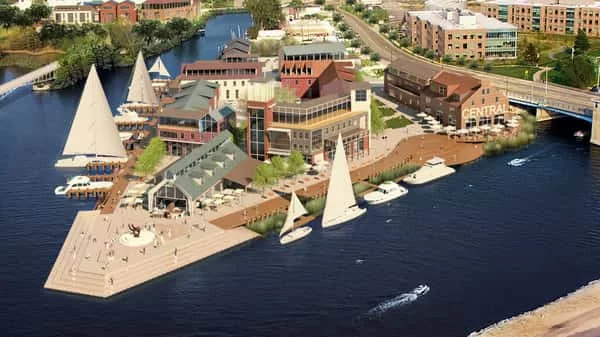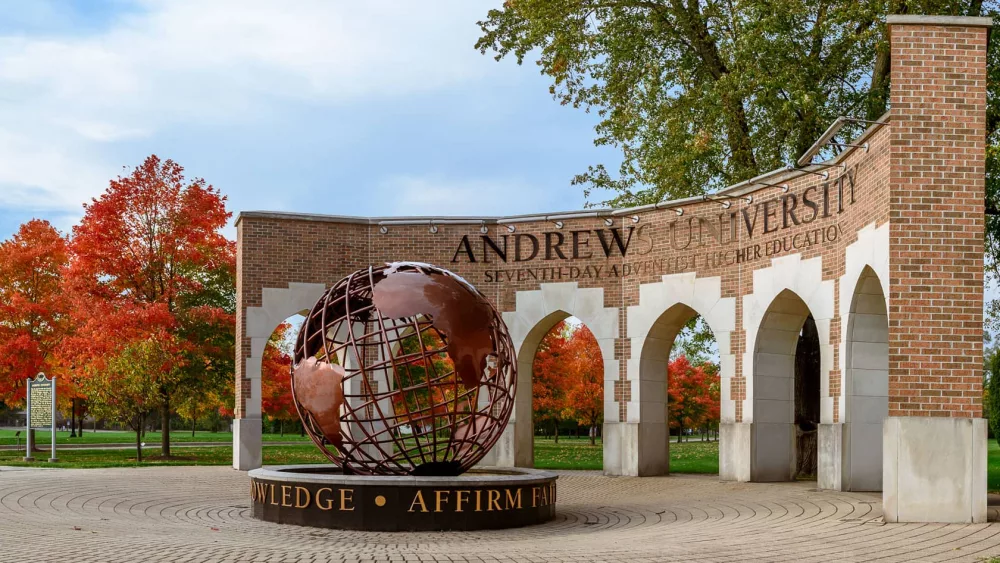Community planners are often tasked with creating a vision of what the ideal land use might be in any given municipality. When the Berrien County Planning Commission met this afternoon, they were among the first to receive a major new Twin Cities Harbor Study crafted by a steering committee that is looking at the long-term potential for the waterfront in St. Joseph and Benton Harbor. It was the perfect launch point for a brief lesson on Community Placemaking by Berrien County Community Development Director Dan Fette and his team.
The images included here and many more like them contained in the comprehensive 82-page report are world-class visions that ask and sometimes answer a lot of "What If" types of questions.
The City of Benton Harbor, along with representatives of the steering committee have released the study evaluating the long-term potential of the harbor. Meeting since August of last year when Benton Harbor organized and led the stakeholder group of diverse private and public leaders, including representatives from St. Joseph and Berrien County. The committee worked through the Andrews University Graduate Urban Design studio in conjunction with the Southwest Michigan Planning Commission and outside experts including firms located in Gold Hill, Colorado, Chicago and Birmingham, Michigan.
Benton Harbor Mayor Marcus Muhammad says, "The future of our region is heavily dependent on the 600-acre study area located within the confines of Lake Michigan, the St. Joseph River and the inner and outer harbors." He adds, "The land along this valuable waterfront is located in both the City of Benton Harbor and the City of St. Joseph and has benefited from an ongoing interest on the part of Berrien County government through the Harbor Commission."
Muhammad suggest that the only way to assure that the development of that area is achieved at the highest and best level possible is to "capture the voices, aspirations and expertise from all participating units of government along with those from the community and business interests." He voice appreciation for everyone's involvement and participation, including local businesses and foundations that helped fund the effort.
Representatives of the committee issued a letter in conjunction with the release of the document titled, "Twin Cities Harbor, A Study of Potential in Benton Harbor and St. Joseph, Michigan," saying "The study was undertaken to stimulate community dialogue over the unlimited possibilities that can be created on the most precious of the community's assets, its waterfront."
The the outset of its work, the committee adopted five guiding principles by which the study was undertaken:
- Transparency: The study would be conducted in a manner in which all information would be posted publicly and shared through open discussions with the community.
- Inclusion: The committee represents a broad-based group of multi-governmental jurisdictions along with community and business interests.
- Fact-Based: Obtain and publish facts associated with current activities, provide a rational data-driven understanding as to the future opportunities, conduct personal visits to other benchmark waterfronts and engage outside experts in the fields of retail market analysis, storm-water management and transportation to design options for the various segments of the harbor site. Each segment of the harbor can stand alone or function in an interactive way across the entire harbor.
- Holistic: To review the entirety of land use and function throughout the harbor study site, cognizant of the need for proper planning, zoning, public access and transportation realities for all means or movement – including walking, biking, boating and all varieties of motorized vehicles.
- Non-Prescriptive: The study highlighted multiple opportunities in various development options without attempting to prescribe or delineate "Must Have" or "Must Do" options, but rather the "What If" associated with the unlimited possibilities for long-term creative development of a vital community waterfront asset.
Speaking on behalf of the committee, Southwest Michigan Planning Commission Executive Director John Egelhaaf says, "Our community has been blessed to have 600 acres of waterfront feeding into the natural wonders of Lake Michigan, connecting us to the navigable waterways of the world." He adds, "The building blocks of progressive change occurring in our region over the past few years, coupled with a caring and deep sense of community spirit from those who reside in the area called Michigan's Great Southwest provide the inspiration by which the Twin Cities Harbor Study was undertaken."
The study provides facts associated with the current operations of the commercial harbor, delineation of the existing landmass along the waterfront as well as details from visits conducted in communities with working ports. Focus group meetings were held with residents in the old Edgewater neighborhood of St. Joseph, operators of Dock 63 Commercial porting interests, a group of recreational boaters and commercial fishermen, along with a community-wide open house where information and materials were shared with more than 200 residents.
The study does not make any recommendations as to the location or continued operations of the working port; rather it offers several ways in which the port operations and mixed development can occur simultaneously over time. In some respects, the study does not answer questions, but provides a foundation of facts, best practices and realistic options to pose questions to be answered by various stakeholders within the community.
The committee is forming a group of stewards of the materials and actively searching for ways to be a catalyst for ongoing community dialogue. A presentation of the study and community open house is planned for later this spring.
Egelhaaf says, "Now that this study has been completed — the fun begins." He tells us, "The study and the accompanying data represent a platform for community dialogue. There is now one central place to find the most complete collection of information on the subject. The study has been provided to multiple public venues, including the public libraries, and posted on the Southwest Michigan Planning Commission website. This study is a testament to the boundless potential in our future as a community fully embracing our waterfront."
Here's a link to the study in full: http://www.swmpc.org/bhsjharbor.asp








